Welcome to your go-to guide for understanding bedroom renovation costs in New Zealand. Whether you’re dreaming of a fresh coat of paint, better storage, or a complete layout overhaul, it’s important to know what kind of budget you’re stepping into. Renovating your bedroom can make a big difference to your comfort and the overall value of your home, but the costs can vary widely depending on your choices. In this article, you’ll get a clear idea of what influences those costs, where your money might go, and how to plan a renovation that fits your needs without blowing your budget.
A bedroom renovation in New Zealand typically costs between $5,000 and $30,000, depending on the size of the room, materials used, and scope of work. Budget updates like painting and flooring are on the lower end, while full renovations with custom joinery or structural changes cost more.
Table of Contents
Why Renovate Your Bedroom?
Renovating your bedroom is more than just a design upgrade. It’s about creating a space that reflects your lifestyle, adds value to your home, and gives you a better everyday experience. Whether you’re tired of old fixtures, planning to sell, or simply want a room that feels more like you, a well-planned renovation can deliver lasting benefits. Here’s why more homeowners across New Zealand are choosing to invest in their bedrooms.
Improve Comfort And Lifestyle
Your bedroom should be the most relaxing space in your home. If it’s not, a renovation can fix that. Updating things like lighting, insulation, and layout can make a huge difference in how you sleep and unwind. Swapping out worn carpets for soft new flooring, upgrading to blackout curtains, or adding a heat pump can instantly improve the room’s comfort. These simple changes can turn an average room into your personal retreat.
Increase Property Value
A well-renovated bedroom can add serious value to your home. Potential buyers notice fresh paint, modern wardrobes, and smart layouts. Even if you’re not planning to sell right away, improving your bedroom can be a smart long-term investment. Homes in New Zealand that feature updated interiors often attract more buyer interest and command higher prices. If you’re renovating to add value, choose neutral colors and practical features that appeal to a wide market.
Fix Outdated Designs Or Layouts
Many older homes in NZ still have bedrooms with poor lighting, dated fittings, or awkward layouts. If you’re dealing with limited wardrobe space, cold drafts, or yellowing walls, it might be time for an upgrade. A renovation gives you the chance to rework the flow of the room, add built-in storage, or even move walls if needed. You can also modernize the style with better lighting, fresh wall colors, and updated decor.
Prepare For Resale Or Rental
If you’re planning to rent out your property or sell it in the near future, a bedroom renovation can help you stand out. Renters and buyers look for clean, functional, and visually appealing rooms. A newly renovated bedroom shows you’ve looked after the property and can justify a higher asking price or rental rate. Even small touches like new carpets, fresh paint, or upgraded wardrobes can make a big impact.
Personalize Your Space
Sometimes, the biggest reason to renovate is simply to make the room feel more like yours. Maybe your style has changed, or you’re sharing the space with a partner now. A renovation lets you choose finishes, colors, and layouts that match your current needs. Whether it’s creating a cozy reading nook, adding built-in storage, or switching to a more modern design, the goal is to build a space that feels right for you.
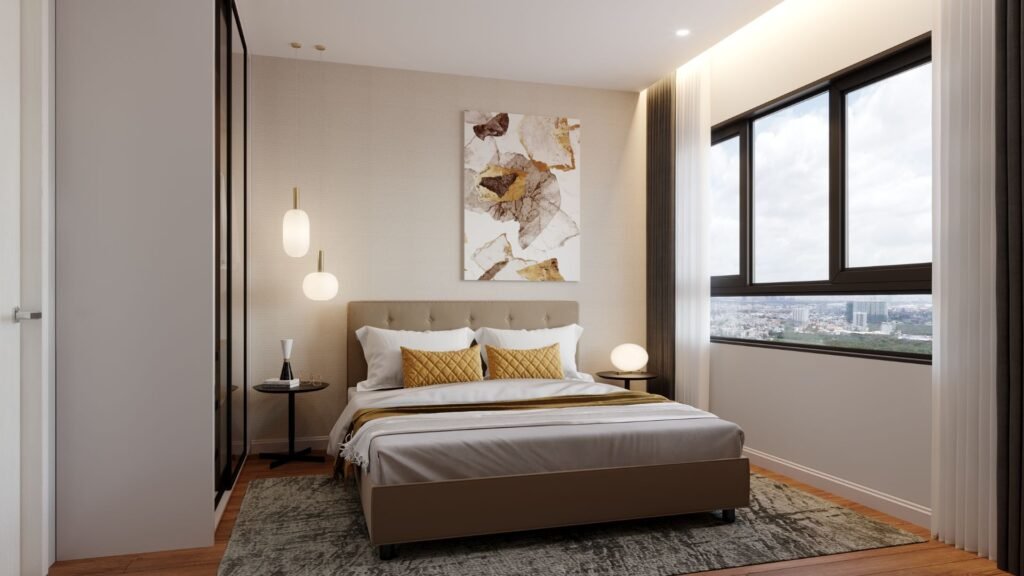
How Much Does A Bedroom Renovation Cost In NZ?
Renovating a bedroom in New Zealand can be as simple as a quick refresh or as involved as a full structural transformation. The cost varies widely depending on your goals, the materials you choose, and how much work needs to be done. Whether you’re working with a tight budget or aiming for a high-end finish, knowing the ballpark figures helps you plan better and avoid surprises.
Budget-Friendly Makeover
If you’re after a simple refresh, a budget-friendly bedroom renovation is a great place to start. This usually includes cosmetic upgrades like painting the walls, replacing outdated carpet or vinyl flooring, and swapping out old furniture or curtains for newer, more stylish options. In many cases, you won’t need to hire a builder or designer. Instead, a few strategic changes can give your room a clean, updated look without costing a fortune.
- Estimated cost: $5,000 to $10,000
- Common updates: Interior paint, ready-made furniture, new carpet or laminate flooring, budget light fixtures
This level of renovation suits people who want a visual upgrade without changing the structure or layout of the room.
Mid-Range Updates
Mid-range bedroom renovations are for those who want more than just a visual makeover. You might be looking to improve storage with built-in wardrobes, upgrade lighting and power points, or make minor layout changes like repositioning a door or window. You may also invest in higher-quality materials and finishes that offer durability and style.
- Estimated cost: $10,000 to $20,000
- Common updates: Built-in storage, new lighting design, mid-range flooring, insulation, professional painting
This budget range often requires help from tradies such as electricians, painters, and installers. It’s ideal for homeowners looking to improve both functionality and aesthetics.
High-End Transformations
A high-end bedroom renovation takes things to the next level. These projects may involve custom joinery, structural changes like moving walls, upgrading windows for better light, or installing smart lighting and heating systems. You’re likely to be working with designers, builders, and possibly even engineers.
- Estimated cost: $20,000 to $30,000+
- Common updates: Structural layout changes, premium finishes, custom cabinetry, integrated tech, acoustic insulation
These renovations are often done as part of a larger home upgrade or when preparing a property for the luxury market. The result is a personalized space with long-lasting value and comfort.
Every Renovation Is Different
No two bedroom renovations are the same. Costs depend on the condition of your current room, the age of your home, and the scope of your vision. Labour rates can also vary based on your location, renovating in Auckland may cost more than in smaller towns. Material choices, unexpected repairs, and changes in plans can also affect your final spend.
That’s why it’s important to:
- Get multiple quotes from qualified professionals
- Outline your must-haves and nice-to-haves
- Set a clear budget with a contingency buffer
A well-planned bedroom renovation not only makes your space more enjoyable but can also add real value to your home. Whether you’re updating for personal comfort or resale potential, understanding the typical costs in NZ helps you stay informed and in control.
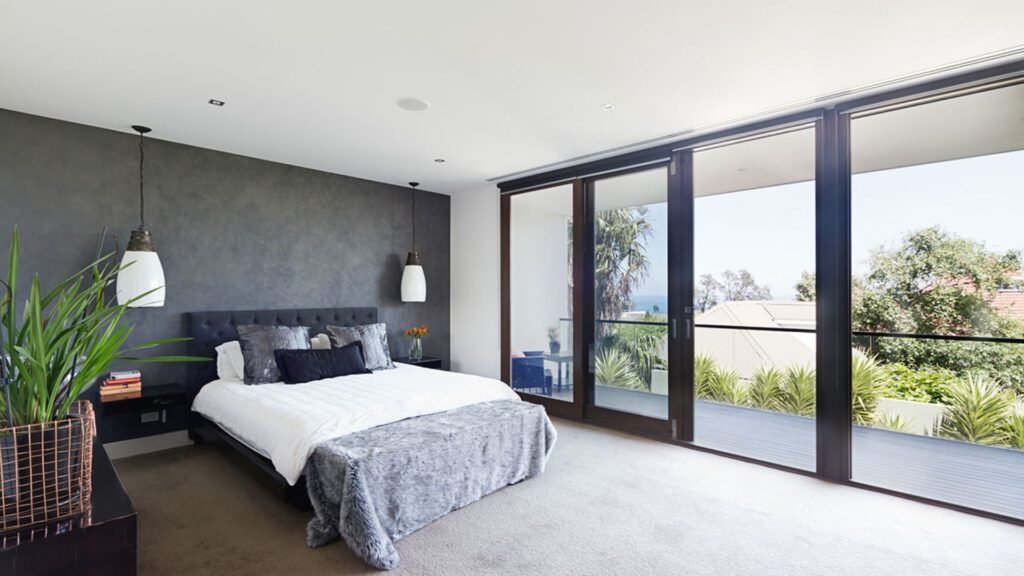
What Impacts Bedroom Renovation Costs?
When planning a bedroom renovation in New Zealand, the cost can vary a lot depending on several key factors. Understanding what drives these costs will help you set a realistic budget and avoid any unpleasant surprises along the way. Below are the main things that can influence how much you’ll end up spending.
Size Of The Bedroom
The bigger the bedroom, the more materials and labour you’ll need. A larger space means more flooring, more paint, and possibly more lighting and electrical work. Small rooms are cheaper to update, while master bedrooms or bedrooms with walk-in wardrobes or ensuites will naturally cost more. Square meterage plays a direct role in pricing, especially when hiring tradespeople who charge by the hour or area.
Scope Of Work
There’s a big difference between a cosmetic refresh and a full structural renovation.
If you’re only repainting, adding new curtains, and upgrading light fixtures, you can expect lower costs. But if you’re knocking down walls, shifting doors, or reworking the layout, the expenses can grow quickly. Structural work often requires council consent, engineering advice, and skilled professionals, all of which add to the total price.
Materials Chosen
Material quality and finish make a huge difference.
A budget-friendly carpet might cost $25 per square metre, while premium hardwood flooring can be over $100 per square metre. The same goes for wardrobes, lighting, paint, and fixtures. If you go for high-end or custom-made options, be prepared for the higher price tag. On the other hand, choosing quality mid-range materials can offer a good balance between durability and cost.
Labour Costs
Labour is one of the largest expenses in any renovation project.
Electricians, builders, painters, and installers all have different rates, and the more skilled the job, the higher the fee. Labour costs in New Zealand can range from $50 to over $100 per hour depending on the trade. If your project involves multiple professionals, the total labour cost can easily exceed several thousand dollars, especially for longer projects.
Location Within NZ
Where you live in New Zealand has a real impact on pricing.
Renovations in Auckland or Wellington tend to be more expensive due to higher labour rates and material delivery costs. In contrast, smaller regional towns may offer lower prices for both trades and supplies. But availability of skilled workers can be limited in remote areas, which might lead to delays or higher call-out fees.
DIY Vs Hiring Professionals
Doing parts of the renovation yourself can save money, but only if you know what you’re doing.
Painting, installing furniture, or even laying simple flooring are tasks many homeowners can take on. But licensed work, like plumbing and electrical, must be done by professionals in NZ. Poor DIY work may lead to extra costs down the line if it needs to be fixed. Think about your skills, the time you have, and the potential risks before committing to a DIY job.
Permits And Council Consents If Needed
Not every bedroom renovation needs a permit, but some do.
If you’re changing the structure, adding windows, or altering the layout, you may need building consent from your local council. This involves application fees, possible inspections, and extra design or engineering input. Skipping this step can cause legal trouble later, especially if you plan to sell the house. Always check with your council before starting major work.
Understanding these cost drivers will help you make smarter choices during your renovation. Whether you’re working with a tight budget or aiming for a luxury upgrade, knowing where your money goes gives you more control over the final result.
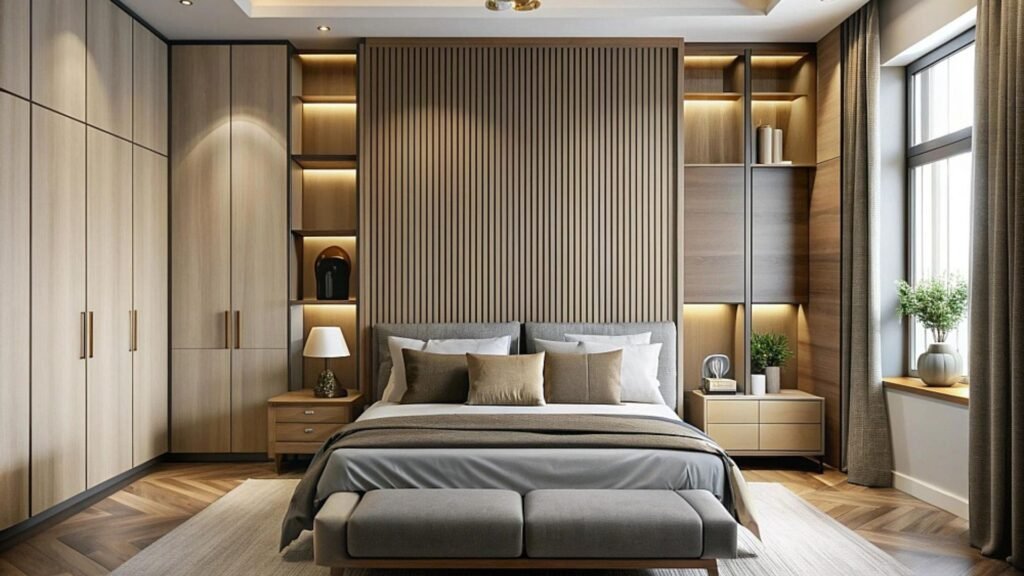
Breakdown Of Common Bedroom Renovation Costs
Renovating a bedroom in New Zealand can quickly add up if you’re not careful. Understanding where your money is likely to go helps you budget better and avoid nasty surprises. Here’s a breakdown of the most common bedroom renovation costs, along with estimated price ranges based on typical NZ rates. Keep in mind that final costs depend on your location, the size of the room, and the quality of materials you choose.
Painting And Plastering
A fresh coat of paint is one of the easiest and most affordable ways to transform a bedroom. If your walls are in good condition, you’re mostly paying for labour and paint. But if there’s damage, you might need plastering first, which adds to the cost.
- Basic repainting: $500–$1,500
- Painting with minor plastering: $1,500–$3,000
- Full prep and premium finishes: $3,000+
Choose low-VOC paints for better air quality. If you’re confident with a roller, this is a job you can DIY to save on labour.
New Flooring
Flooring sets the tone of the entire space. In New Zealand, the most common bedroom flooring options are carpet, laminate, and engineered hardwood. Each comes with different costs and benefits.
- Carpet (budget to premium): $40–$120 per sqm installed
- Laminate: $50–$100 per sqm installed
- Engineered wood: $120–$200+ per sqm installed
The carpet is warmer underfoot and great for colder regions. Laminate is easy to clean and budget-friendly. Engineered wood gives a modern, high-end feel but costs more.
Wardrobes And Storage
Storage is essential in a functional bedroom. The cost depends on whether you choose a freestanding option or invest in built-in wardrobes.
- Flat-pack or freestanding wardrobe: $400–$1,000
- Built-in wardrobe with sliding doors: $2,000–$5,000
- Custom storage with internal shelving: $5,000+
Built-ins add more value and make better use of space, especially in smaller rooms. Custom options let you design around your lifestyle, but they come at a higher cost.
Lighting And Electrical Updates
Lighting plays a key role in how a bedroom feels. Swapping out old fixtures, adding dimmable switches, or upgrading to LED downlights can make a big difference.
- Basic fixture replacement: $150–$500
- New light fittings with wiring: $500–$1,200
- Full electrical overhaul (with rewiring): $1,500–$3,000+
Labour costs vary by region. If your home’s wiring is outdated, it’s safer (and required by law) to get a qualified electrician involved.
Insulation And Heating
A warm, well-insulated bedroom is more comfortable and energy-efficient. Older NZ homes often lack proper insulation, especially in walls and underfloor.
- Ceiling insulation: $1,500–$3,000
- Wall insulation (if accessible): $2,500–$6,000
- Heat pump installation: $2,000–$3,500
- Panel heater: $300–$800
Investing in insulation lowers your power bill and improves year-round comfort. Heat pumps are popular in NZ for their efficiency and ability to cool in summer.
Windows And Blinds/Curtains
Windows affect light, warmth, and noise. Updating old single-glazed windows or adding the right window treatments can improve both function and style.
- New blinds or curtains: $300–$1,500
- Double glazing (per window): $800–$1,500
- Full window replacement: $3,000+
Blockout curtains or thermal blinds help with insulation. If you’re on a tight budget, quality off-the-shelf blinds can still look great.
Furniture And Decor (Optional But Relevant)
While not always counted in renovation quotes, furniture and styling can quickly impact your total spend. Even a few new pieces can modernise the space.
- Bed frame and mattress: $1,000–$4,000
- Bedside tables: $200–$600
- Dresser or drawers: $500–$1,500
- Artwork, rugs, lamps: $500–$1,500
You don’t have to buy everything new. Mixing in existing pieces or shopping second-hand can reduce costs without sacrificing style.
This cost breakdown gives you a clearer picture of what goes into a typical bedroom renovation in NZ. Whether you’re planning a small refresh or a full transformation, knowing these numbers helps you make smarter decisions. Always compare quotes, choose where to splurge or save, and be prepared for a few unexpected extras along the way.

Hidden Or Unexpected Costs To Watch Out For
Renovating a bedroom in New Zealand can be exciting, but it’s easy to get caught off guard by extra costs you didn’t plan for. These hidden or unexpected expenses can quickly push your budget over the edge if you’re not careful. Below are some of the most common surprises Kiwi homeowners face during a bedroom renovation, knowing about them upfront can help you stay in control.
Electrical Upgrades If Wiring Is Old
If your home was built more than a few decades ago, there’s a chance the wiring doesn’t meet today’s safety standards. Once walls are opened up, electricians may discover outdated or unsafe wiring that must be replaced. This isn’t just a technical issue, it’s about safety and future-proofing your home. The cost for rewiring can vary, but it’s not something to skip. Always leave room in your budget for possible electrical updates.
Removing Mould Or Damp
Many homes in New Zealand, especially older ones, struggle with moisture issues. If your bedroom shows signs of mould or dampness, especially behind walls, under carpets, or around windows, you’ll need to deal with it before continuing the renovation. Removing mould isn’t just cosmetic. It’s about health. Ignoring it can lead to long-term problems and extra repairs later. A professional mould removal job may cost more than you expect, depending on how deep the issue goes.
Replacing Damaged Flooring Or Walls
You might plan to paint the walls or install new carpet, but once you start pulling things up, you could uncover rot, cracks, or water damage. Subflooring may need repair, or plasterboard may need replacing. These repairs are essential and can quickly add hundreds or thousands to your costs. Always check for signs of wear early on, and have a buffer in your budget just in case.
Delivery Fees For Materials
Buying materials online or from specialty suppliers can save time, but delivery fees often catch people off guard. Heavy items like flooring, wardrobes, or plasterboard usually come with added transport charges. These costs can increase further if you’re renovating in a remote area or if items need to be delivered in multiple batches. Always ask about delivery fees when comparing suppliers.
Trades Availability Delays
Good tradies in NZ are often booked weeks, or months, in advance. If your preferred contractor isn’t available when you need them, you may either pay a premium for a faster turnaround or face delays that extend your project. Delays can also lead to storage issues, extra rent if you’re living elsewhere, or other costs. Plan ahead, book early, and build flexibility into your timeline.
Council Consent For Structural Work
Not all renovations require consent, but if you’re planning structural changes, like removing or moving a wall, adding a window, or adjusting load-bearing elements, you’ll likely need approval from your local council. This involves paperwork, inspections, and potentially long wait times. It also means extra fees. Always check with your council before making big changes, so you’re not caught by surprise mid-project.
Knowing these hidden costs ahead of time helps you plan smarter, budget more accurately, and reduce the risk of delays. A successful bedroom renovation isn’t just about choosing paint colours, it’s about making sure the work behind the scenes is done right, without draining your wallet.
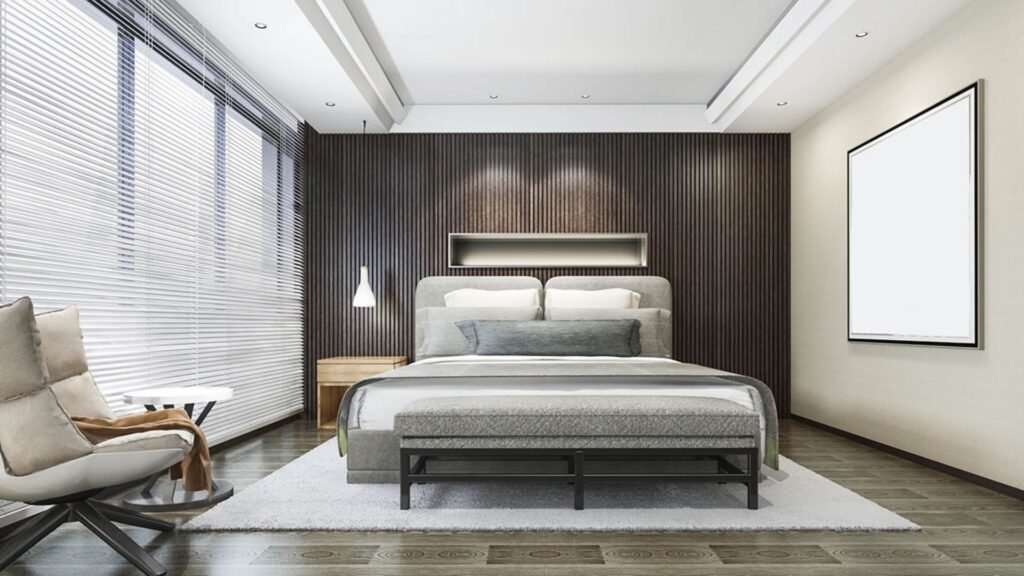
How To Budget For Your Bedroom Renovation
Planning a bedroom renovation can be exciting, but it’s easy to lose track of costs if you don’t set a clear budget from the start. Whether you’re going for a simple refresh or a full-scale makeover, having a smart budget can keep your project on track and save you from surprises. Here’s how to do it right.
Set Your Max Budget Early
Before choosing paint colours or furniture, decide how much you’re willing to spend. Setting a firm upper limit helps you avoid scope creep and makes decision-making easier down the line. Think about your total renovation goals, and then break them down into must-haves and optional upgrades. Are you upgrading for comfort, resale value, or both? Your reasons will help guide your spending.
Get Quotes From Multiple Tradies
Labour is often one of the biggest costs in a renovation. Don’t settle for the first quote you get. Reach out to at least three local tradies or contractors. Ask for itemized estimates so you can see where your money is going. This not only gives you a fair price range but also helps you gauge who is more transparent and reliable. If possible, check reviews or ask for references.
Prioritize Needs Vs Wants
It’s tempting to go all out on custom furniture or luxury finishes, but those extras can quickly push your budget over the edge. Focus on what will make the biggest impact, like better storage, quality lighting, or improved insulation. Once the essentials are covered, you can use leftover funds for design upgrades like new decor or high-end finishes. If money’s tight, compromise on features that won’t affect function or comfort.
Keep A Contingency Buffer (10–15%)
Unexpected costs almost always pop up, old wiring, hidden damp, or supply delays can add to your total bill. Build a contingency buffer of 10 to 15 percent into your budget. This gives you breathing room without throwing off the entire project. It also allows you to make small upgrades later if everything goes smoothly and you have leftover funds.
Don’t Forget GST
When budgeting, always check if prices include GST. Many quotes in New Zealand list pricing excluding GST, which is 15%. That small detail can make a big difference in your final cost, especially for larger jobs. Ask your contractor directly, and make sure your spreadsheet or budget app accounts for the full price including tax.
Smart budgeting is the foundation of a successful bedroom renovation. With clear priorities, accurate quotes, and a little financial wiggle room, you’ll stay in control from day one. Take your time planning now, and you’ll avoid headaches later.
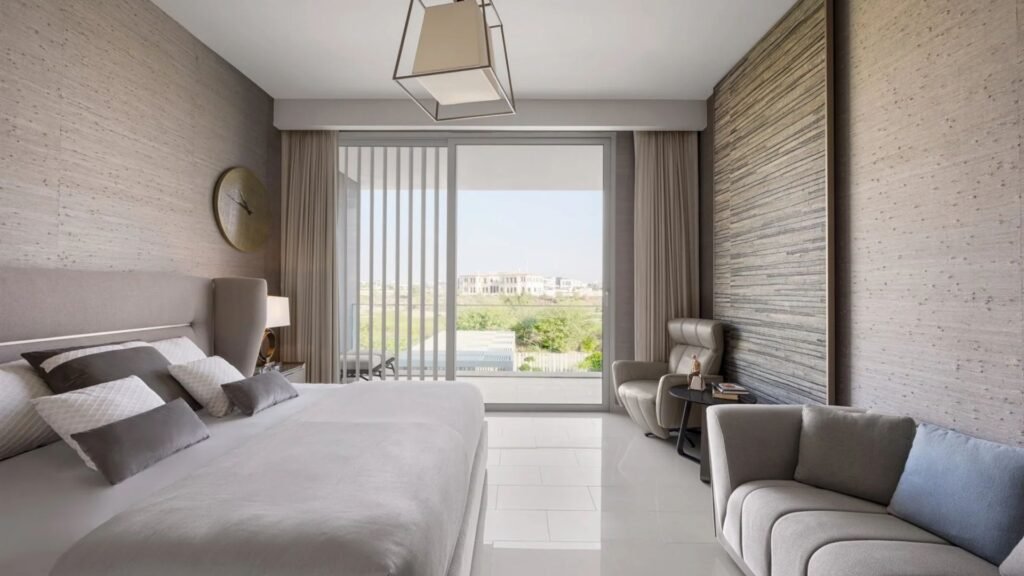
DIY Vs Hiring Professionals: What’s Right For You?
Renovating your bedroom comes with many choices, but one of the biggest is whether to take the DIY route or hire professionals. Getting this decision right can save you money, time, and stress. It also ensures your renovation meets safety standards and delivers the result you want. Let’s break it down.
What Jobs You Can Realistically DIY
If you’re handy and enjoy small projects, there are several parts of a bedroom renovation you can take on yourself. These are tasks that don’t require special tools, permits, or trade licenses.
- Painting: Prepping and painting walls is one of the most popular DIY jobs. With good technique and a little patience, you can refresh your bedroom for a low cost.
- Furniture Assembly: Flat-pack furniture or minor custom pieces are usually manageable. Just follow the instructions carefully.
- Decorating And Styling: Hanging art, installing curtains, and placing furniture are all tasks you can do without a professional.
- Basic Demolition: Removing old carpet, skirting boards, or fixtures can often be done yourself. Just make sure you’re not disturbing electrical wiring or structural elements.
Taking on these tasks can reduce labour costs, and it’s often satisfying to see your personal effort reflected in the final space.
What’s Best Left To The Pros
Some jobs aren’t safe or legal to do on your own. They also require experience to get right the first time. These include:
- Electrical Work: Any new wiring, lighting changes, or power point installations must be done by a licensed electrician in New Zealand. It’s illegal and dangerous to DIY.
- Built-In Wardrobes Or Joinery: Custom cabinetry requires precision tools, experience, and access to the right materials. Mistakes here can be costly.
- Layout Changes: If you’re altering the room’s structure, like knocking down a wall or moving a window, a licensed builder is essential. You may also need building consent.
- Plastering And Gib Stopping: While it might seem easy, getting a smooth wall finish is a skill. Uneven walls will show through paint and affect the final result.
Hiring professionals ensures your renovation meets legal standards, looks polished, and won’t need fixing later.
Cost Savings Vs Time Vs Quality
Doing it yourself can save on labour, which often makes up 40–60% of renovation costs. But you’ll need to balance that saving against time and quality.
- Time: DIY often takes longer, especially if you’re learning as you go. Professionals work faster and more efficiently.
- Quality: A pro will deliver consistent results. If your DIY work isn’t up to standard, you might have to pay to redo it.
- Stress: Managing a renovation is no small job. Hiring pros can reduce mental load and decision fatigue.
- Ask yourself: Do you have the time, tools, and patience to do it well? If not, the upfront cost of hiring help may pay off long-term.
NZ Rules Around Licensed Work
In New Zealand, there are strict rules about who can perform certain tasks:
- Electrical And Gas Work: Must be completed by licensed tradespeople. DIY is illegal.
- Restricted Building Work: If structural work is involved, a Licensed Building Practitioner (LBP) must do it. This applies to load-bearing changes or major alterations.
- Building Consents: Some renovations require council approval, especially when altering structure, insulation, or fire safety elements.
Failing to follow these rules can result in fines, insurance issues, or being forced to redo the work legally. Always check with your local council or hire a qualified professional for anything beyond surface updates.
If you’re confident, careful, and sticking to cosmetic changes, DIY can be a great option. But for anything involving wiring, structure, or compliance, it’s best to bring in the pros. You’ll get peace of mind, and a result that’s built to last.
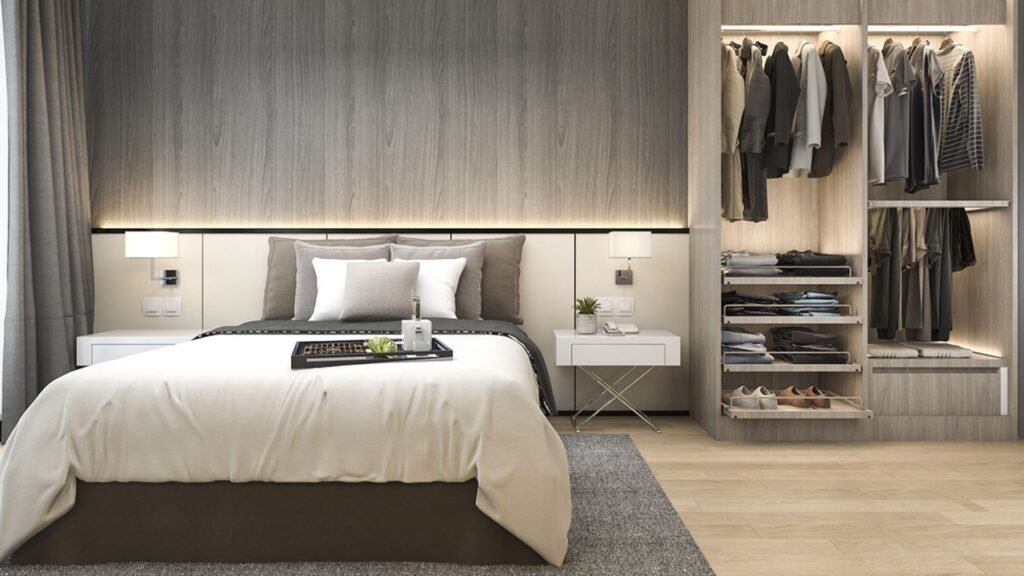
Tips To Keep Costs Down Without Sacrificing Quality
Renovating your bedroom doesn’t have to cost a fortune. With some smart choices and a bit of planning, you can get a high-quality result without overspending. Whether you’re updating a small space or doing a full makeover, these practical tips will help you stay within budget while still getting the look and feel you want.
Shop Off-Season For Materials
Prices for building materials and décor can vary throughout the year. Shopping during off-peak seasons, like winter or post-holiday periods, can save you money on paint, flooring, lighting, and even trades. Retailers often offer clearance sales or discounts on last season’s stock. If you plan ahead, you can grab quality products at a fraction of the usual price.
Reuse Or Upcycle Existing Furniture
Before you toss out your old furniture, take a second look. A fresh coat of paint, new handles, or updated upholstery can completely change how a piece looks and feels. Repurposing a set of drawers or turning a table into a bedside unit saves money and adds character to your space. Upcycling isn’t just affordable, it’s also environmentally friendly and adds a personal touch to your room.
Choose Cost-Effective Alternatives
You don’t need top-of-the-line materials to get a stylish finish. Laminate flooring, for example, can mimic the look of hardwood at a much lower cost. MDF can replace solid timber for wardrobe interiors or shelves. Vinyl wallpaper can stand in for expensive wall treatments. Always compare options, and don’t be afraid to ask suppliers for budget-friendly alternatives that still perform well.
Stick To The Original Layout
Changing the layout might seem tempting, but moving walls, doors, or electrical points quickly adds cost. Keeping your existing structure saves you from needing extra trades like builders or electricians, and reduces the chance of needing council approval. By working with what you already have, you can focus your budget on finishes and features that will make the most visible impact.
Use Ready-Made Wardrobes Instead Of Custom Ones
Custom wardrobes look great, but they’re usually one of the most expensive parts of a bedroom renovation. Ready-made or flat-pack wardrobes from retailers like Mitre 10, Bunnings, or IKEA offer great value. They come in a range of sizes and finishes, and many look just as good as built-ins once installed. With a bit of careful measurement, you can create a sleek storage solution without the custom price tag.
Following these tips doesn’t mean cutting corners, it means making smart choices. By being strategic with where you spend and where you save, you can get a high-quality result without blowing your budget. If you’re planning a renovation soon, start by looking at what you already have, researching your options, and timing your purchases right. Every dollar saved can go toward something you’ll really enjoy in your new bedroom.
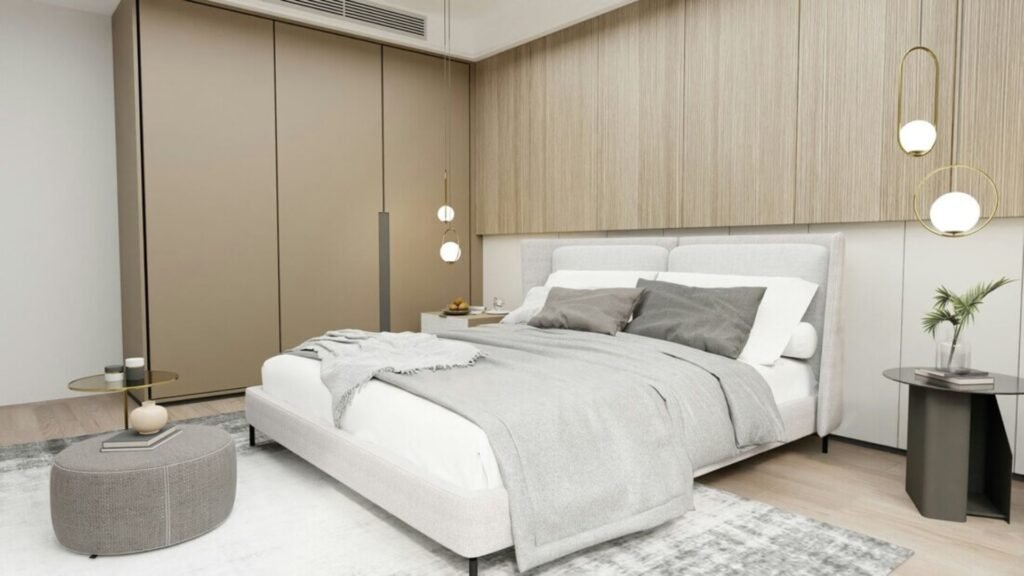
Real NZ Examples: What Others Spent On Their Bedroom Reno
When planning a bedroom renovation in New Zealand, nothing beats hearing what real people actually spent and experienced. These three real-life case studies give you a clearer picture of how different budgets play out, from small refreshes to high-end transformations. Each example also includes what went well, what didn’t, and what they’d do differently next time.
Case Study 1: Small Room Refresh On A $7K Budget
- Location: Hamilton
- Homeowner Goal: Create a fresh, cozy guest room without major structural work
- Scope Of Work:
1. Repainted all walls and ceiling
2. Replaced worn carpet with mid-range grey loop pile
3. Bought a new double bed and side tables
4. Added blackout curtains and LED downlights
5. Minor plastering and trim repair
- Total Spent: $7,050
What Worked Well
The homeowner kept the layout the same and did the painting themselves to cut labour costs. By shopping smart during a winter sale, they scored discounted lighting and furniture.
What They’d Do Differently
They underestimated how much time DIY painting would take. Next time, they’d budget to hire a pro painter and finish faster.
Case Study 2: Mid-Range Revamp With Insulation And Storage For $15K
- Location: Wellington
- Homeowner Goal: Upgrade an old master bedroom into a warm, modern retreat
- Scope Of Work:
1. Added wall and ceiling insulation
2. Installed new double-glazed window
3. Fitted a built-in wardrobe with sliding doors
4. New wool carpet and fresh paint
5. Rewired room and added dimmable lighting
6. Bought new headboard and soft furnishings
Total Spent: $15,400
What Worked Well
Improved insulation made the room more comfortable year-round. The built-in wardrobe maximized storage without crowding the space. They also got great value from working with a trusted local builder.
What They’d Do Differently
They regret not upgrading to a heat pump when the walls were open. Doing it later would be more costly and invasive.
Case Study 3: Full Luxury Reno With Ensuite Upgrade Over $30K
- Location: Auckland
- Homeowner Goal: Transform main bedroom and connect it to a luxury ensuite
- Scope Of Work:
1. Knocked down a non-load bearing wall to expand the space
2. Installed custom joinery and soft-close cabinetry
3. Added underfloor heating
4. Renovated ensuite with tiled shower, double vanity, and LED mirror
5. High-end finishes, recessed lighting, soundproof insulation
6. Full repaint, designer wallpaper, and new curtains
- Total Spent: $34,900
What Worked Well
The finished result looked and felt like a boutique hotel room. The layout improved dramatically, and the ensuite became a huge value booster for resale.
What They’d Do Differently
They wished they had budgeted more time. Delays with material shipping stretched the timeline by several weeks.
These real NZ renovation stories show how budget, planning, and priorities shape every project. Whether you’re spending $7K or $30K, knowing where others spent wisely, and where they didn’t, can help you avoid common mistakes and get more value from your own renovation.
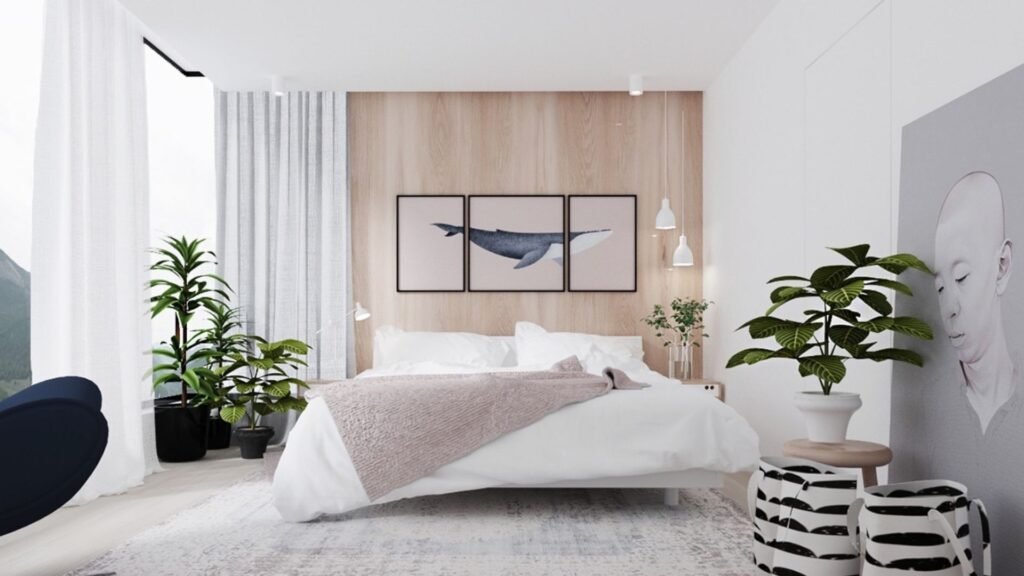
Is A Bedroom Renovation Worth It?
Renovating a bedroom might seem like a big expense, but for many homeowners in New Zealand, it’s one of the most rewarding investments they can make. Whether you’re updating an outdated space or planning for resale, a bedroom renovation offers more than just a visual upgrade, it adds real value to your daily life and your property. Here’s a closer look at why it’s worth considering.
Value Boost For Resale
One of the most practical reasons to renovate your bedroom is to increase your home’s market value. Buyers are drawn to homes that feel modern, clean, and well cared for. A freshly renovated bedroom with new flooring, updated lighting, and smart storage solutions can make your property stand out in a competitive NZ market. It doesn’t have to be extravagant, even small improvements like new paint, curtains, and built-in wardrobes can help create a strong first impression. If you’re planning to sell soon, a well-designed bedroom can be a key selling point.
Energy Efficiency Improvements
Many older bedrooms in New Zealand lack proper insulation or have outdated windows that let heat escape. Renovating your bedroom gives you the chance to upgrade insulation, seal drafts, and install energy-efficient windows or heating systems. These changes reduce energy bills and create a more comfortable environment year-round. Buyers are also becoming more energy-conscious, so these upgrades can make your home more appealing and eco-friendly.
Comfort And Lifestyle Gains
Your bedroom should be a space that helps you relax and recharge. Renovation lets you tailor the space to your current lifestyle. You might want a better layout, blackout curtains for improved sleep, more natural light, or built-in storage to reduce clutter. Whether it’s adding a reading nook or switching to softer lighting, small details can make a big difference. These improvements are not just about looks, they enhance how you feel and function in the space every day.
Personal Satisfaction
There’s something satisfying about walking into a room that feels like your own. Renovating gives you the freedom to express your taste and create a space that reflects your personality. Maybe you’ve always wanted a minimalist look, a splash of colour, or a custom headboard wall. A bedroom renovation allows you to bring those ideas to life. It’s a personal project that can bring daily joy, especially when the space feels calming, organized, and designed with purpose.
A bedroom renovation in New Zealand isn’t just about money, it’s about value, comfort, and peace of mind. If done thoughtfully, it pays off both emotionally and financially.
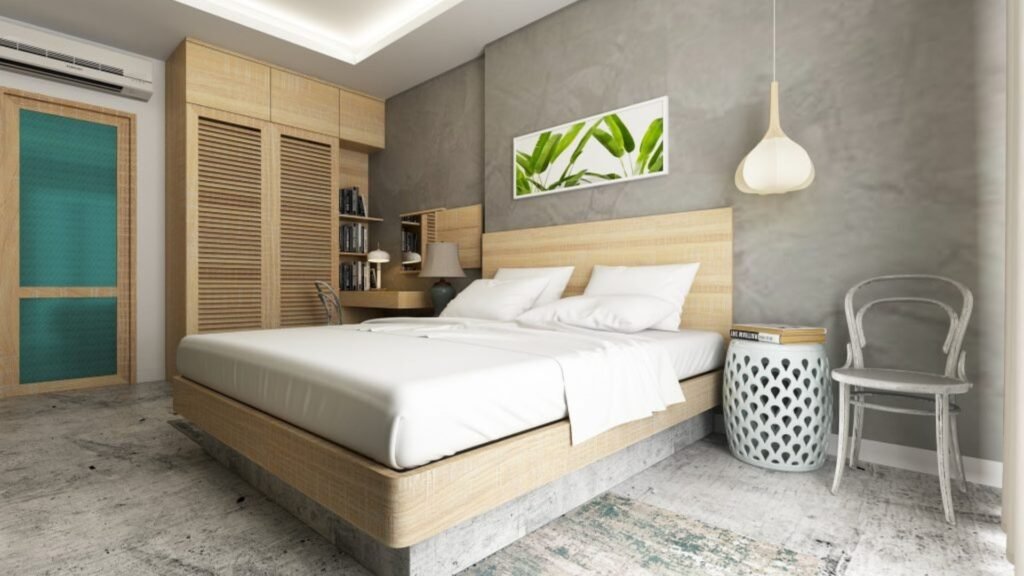
Quick Checklist: Plan Your Bedroom Reno The Smart Way
Planning a bedroom renovation can feel overwhelming, especially if it’s your first major home project. But breaking it down into small, manageable steps can help you stay on track, avoid overspending, and get the results you actually want. Below is a practical checklist you can follow to stay focused and in control throughout your bedroom renovation journey.
Define Your Goals
Before spending a dollar, get clear on why you’re renovating.
Are you updating a dated space for comfort? Creating a stylish guest room? Preparing to sell your home? Your goal will influence every decision, from layout and materials to your overall budget.
Start by asking yourself:
- What problems do I want to solve in this space?
- Who is this room for?
- What do I want the finished result to feel like?
Being clear on your purpose helps you avoid unnecessary extras and focus on what truly matters to you.
Set A Realistic Budget
Once you’ve defined your goals, put a number on what you’re willing to spend.
In New Zealand, bedroom renovations typically cost anywhere from $5,000 for minor cosmetic changes to over $30,000 for a full revamp. Your budget should reflect your expectations.
Here’s how to stay realistic:
- Get quotes from at least two or three local tradies
- Research average costs for flooring, painting, wardrobes, and lighting
- Include a 10–15% buffer for unexpected expenses
A clear, honest budget is the backbone of a stress-free reno.
List Must-Haves Vs Nice-To-Haves
You don’t need to do everything at once.
Start by listing what’s essential. Maybe that’s insulation, new flooring, or fixing poor lighting. Then make a separate list of things that would be great if the budget allows, like custom joinery or designer wallpaper.
This approach gives you flexibility and protects your core budget. If you run out of funds halfway through, you won’t be stuck skipping essentials.
Ask yourself:
- What do I use this space for daily?
- What improvements would have the biggest impact?
- What could wait until later?
Get Expert Advice When Needed
It’s tempting to go full DIY, but not all tasks are created equal. Jobs like rewiring lights, altering the structure, or dealing with damp should always be handled by qualified professionals. Even if you’re confident with tools, it’s smart to talk to a builder, electrician, or designer before making big moves.
Experts can:
- Spot problems before they become expensive
- Help you stay within building codes
- Offer solutions you might not have thought of
Good advice early on can save you from costly mistakes later.
Track All Your Spending
Renovation budgets often get blown not by big-ticket items, but by lots of small ones.
Paint, handles, fittings, delivery fees, these can quietly add up. That’s why it’s essential to keep a simple spreadsheet or budgeting app to log every cost.
Track:
- Quotes and invoices
- Material purchases
- Labour costs
- Unexpected extras
Seeing where your money goes helps you make smarter decisions as the project progresses. And if you’re planning future renos, you’ll have a reliable record of what things really cost.
Don’t let the planning overwhelm you. Head over to our website and see how simple it is to get started.
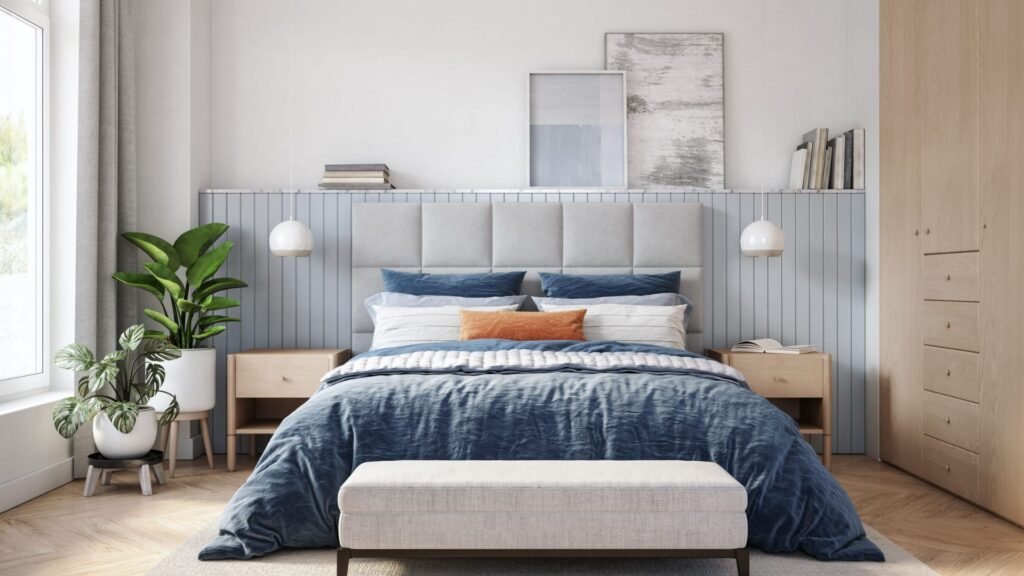
FAQs: About Bedroom Renovation Cost In NZ
What is the average cost of a bedroom renovation in New Zealand?
The average cost ranges from $5,000 for a basic makeover to over $30,000 for a full high-end renovation. Most mid-range projects fall between $10,000 and $20,000.
What factors influence the cost of a bedroom renovation?
Key factors include the size of the room, the extent of work, materials chosen, labour rates, your location, and whether you hire professionals or do parts yourself.
Is it cheaper to renovate a bedroom yourself?
DIY can reduce costs, especially for tasks like painting or furniture assembly. But work like electrical wiring, built-ins, or structural changes should be done by licensed professionals.
Do I need council consent for a bedroom renovation?
You generally don’t need consent for cosmetic changes. But structural changes, adding a window, or altering load-bearing walls may require building consent in NZ.
Can I renovate a bedroom on a $10,000 budget?
Yes, you can achieve a solid mid-range renovation on this budget. Focus on essentials like painting, new flooring, lighting, and a wardrobe upgrade.
What are the hidden costs to watch for during renovation?
Hidden costs may include outdated electrical systems, insulation upgrades, water damage, delivery fees, trades delays, or unforeseen structural issues.
What type of flooring is best for a bedroom in NZ?
Popular choices include carpet for warmth, laminate for durability, and engineered wood for a premium look. Cost and insulation needs should guide your choice.
How long does a typical bedroom renovation take?
A basic update may take 1–2 weeks. More complex renovations with structural work or custom elements can take 3–6 weeks or longer, depending on trades availability.
Will a bedroom renovation increase my home’s value?
Yes, a well-executed renovation can boost appeal and value, especially if you improve insulation, lighting, and storage. It’s a strong selling point in NZ’s housing market.
How can I keep renovation costs down without compromising quality?
Stick to the original layout, compare quotes, shop for materials during sales, use ready-made storage solutions, and reuse existing furniture where possible.
Conclusion
A bedroom renovation doesn’t need to break the bank when you take the time to plan carefully, prioritize your needs, and set a clear budget from the start. With so many cost-effective options available in New Zealand, from DIY updates to smart material choices, you can transform your space without overspending. A thoughtful renovation not only makes your bedroom feel more comfortable and inviting but can also add real value to your home. The key is to stay realistic, do your research, and avoid rushing into decisions that might lead to regrets or added costs later on. Whether you’re tackling a small refresh or a full transformation, taking that first step is often the hardest part, but once you begin, you’ll be glad you did.







